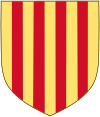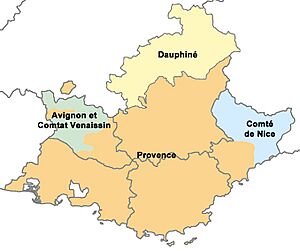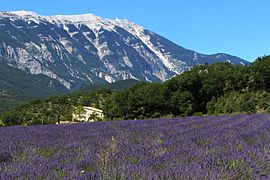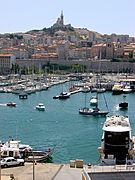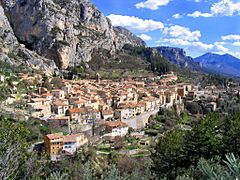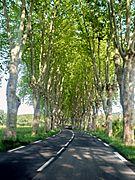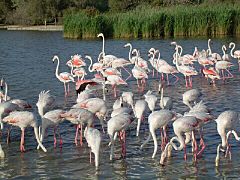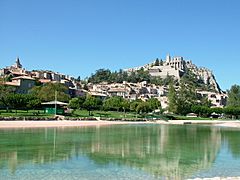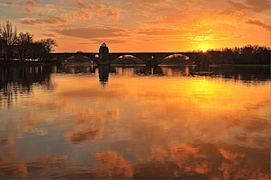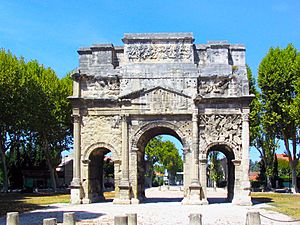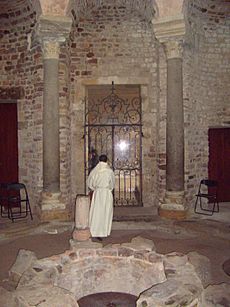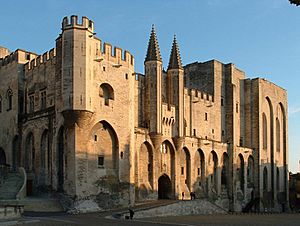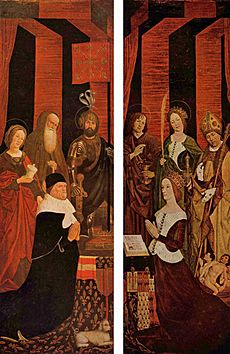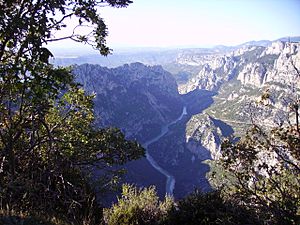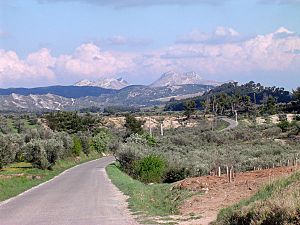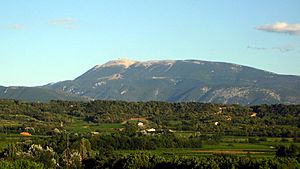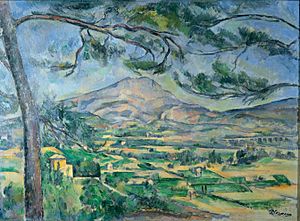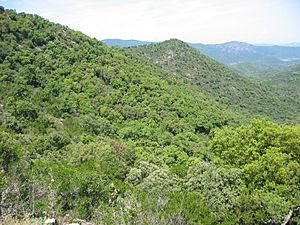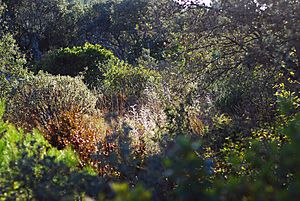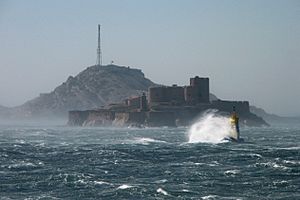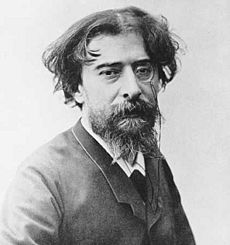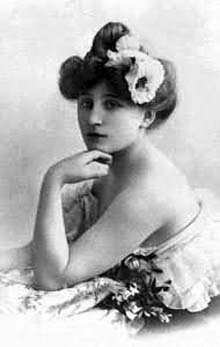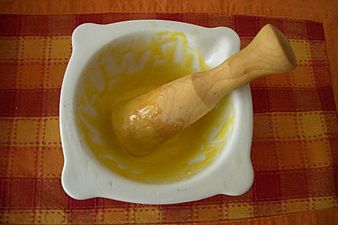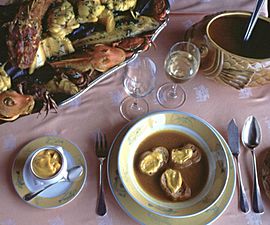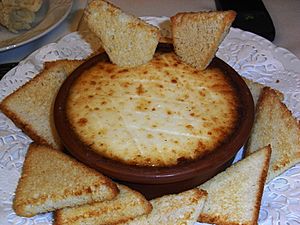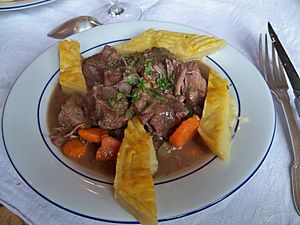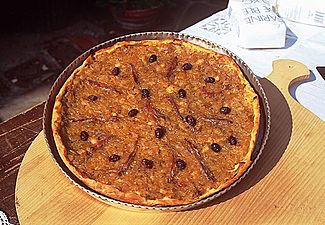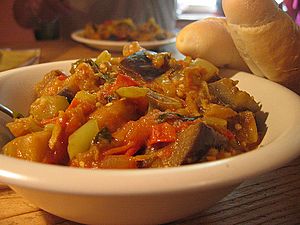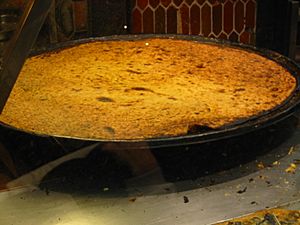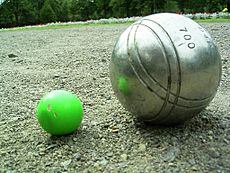Provence facts for kids
Quick facts for kids
Provence
Provença (Occitan)
|
|||
|---|---|---|---|
|
Historical province
|
|||
|
|||
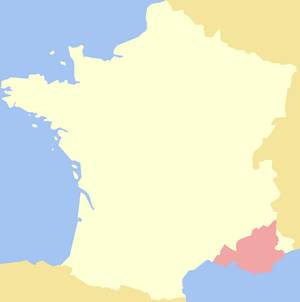
Location of Comté de Provence
|
|||
| Country | |||
| Region | |||
| Largest city | |||
| Demonym(s) | Provençal, Provençale | ||
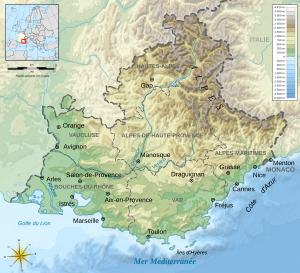
Provence is a beautiful area in southeastern France. It stretches from the Rhône River in the west to the Italian border in the east. To the south, it touches the Mediterranean Sea. This region is mostly the same as the modern French area called Provence-Alpes-Côte d'Azur. It includes several departments like Var, Bouches-du-Rhône, and Alpes-de-Haute-Provence. The biggest city in Provence is Marseille.
Long ago, the Romans made Provence their first province outside of Italy. They called it Provincia Romana, which is where the name Provence comes from today. For many centuries, it was ruled by the Counts of Provence from their capital, Aix-en-Provence. In 1481, it became part of France. Even though it has been French for over 500 years, Provence still has its own special culture and language, especially in the countryside.
Contents
- Gallery of Provence
- History of Provence
- Ancient Times: Early Humans and Tribes
- Ligures and Celts: Early Settlers
- Greeks: Trade and Exploration
- Romans: A New Province
- Christianity Arrives
- Middle Ages: Invasions and Counts
- Popes in Avignon
- Good King René and France
- Provence from 1486 to the French Revolution
- French Revolution and Napoleon
- 19th Century: Growth and Change
- 20th Century: Wars and Tourism
- Geography of Provence
- Climate of Provence
- Language and Literature
- Music Inspired by Provence
- Painters of Provence
- Film in Provence
- Cuisine of Provence
- Wines of Provence
- Pastis: The Local Drink
- Pétanque: A Popular Sport
- Images for kids
- See also
Gallery of Provence
-
Mont Ventoux and a field of lavender
-
The old port of Marseille.
-
Place Republique in Arles
-
Provençal country road lined with plane trees
-
Flamingos in the Camargue
-
Pont Saint-Bénézet at sunset
History of Provence
Ancient Times: Early Humans and Tribes
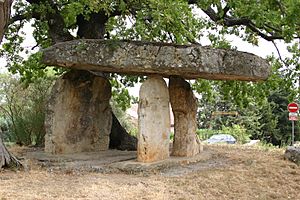
The coast of Provence is one of the oldest places where humans lived in Europe. Very old stone tools, over a million years old, have been found here. Even older tools and some of Europe's first fireplaces were found in Nice.
During the Stone Age, the climate in Provence changed a lot. Ice ages came and went, and the sea level went up and down. This meant that early human homes were often flooded or washed away.
One amazing discovery from this time is the Cosquer Cave. In 1985, a diver found the entrance to this cave 37 meters underwater near Marseille. Inside, there are drawings of animals like bison, seals, and horses, made by early humans between 27,000 and 19,000 BC.
Around 6000 BC, people in Provence started to domesticate wild sheep. This meant they could stay in one place instead of moving all the time. They also made the first pottery in France, inspired by pottery from the eastern Mediterranean. Later, new groups of farmers and warriors arrived, changing the way people lived.
Ligures and Celts: Early Settlers
Between 1000 and 400 BC, the Ligures lived in Provence. They were a tough people, known for hunting and climbing mountains. They didn't have their own alphabet, but their language can still be seen in place names today. You can also find their ancient stone shelters, called 'Bories', and rock carvings in the Valley of Marvels.
Later, between 800 and 500 BC, Celtic tribes arrived from Central Europe. They had iron weapons, which helped them take over from the local tribes who used bronze. The Celts and Ligures eventually shared the land. They built forts on hilltops, called oppida, and traded goods like iron, silver, and honey.
Greeks: Trade and Exploration
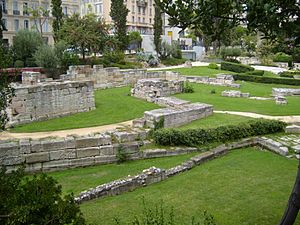
Greek traders started visiting Provence around 700 BC. They even gave the Rhône River its name. The first lasting Greek settlement was Massalia, founded around 600 BC by people from Phocaea (modern-day Turkey).
Massalia (now Marseille) became a very important trading port. It had a population of about 6,000 people and was governed by its wealthiest citizens. Its coins were found all over the region. Traders from Massalia explored deep into France and even as far as the Baltic Sea. They sold local wine, salted fish, and other goods.
One famous person from Massalia was Pytheas, a mathematician and explorer. He was the first to figure out Marseille's latitude and noticed that tides were linked to the moon. He even sailed north to England, Iceland, and Norway, describing ice and the midnight sun!
Romans: A New Province
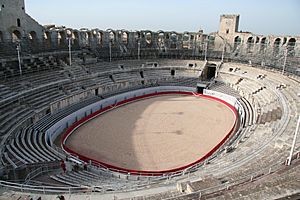
In the 2nd century BC, the people of Massalia asked Rome for help against the Ligures. Roman armies came to Provence several times. After a big battle in 125 BC, the Romans decided to stay. They built new towns like Aquae Sextiae (now Aix-en-Provence) and Narbo (Narbonne).
The Roman general Gaius Marius defeated the last resistance in 102 BC. Then, the Romans built roads to connect their empire, making trade and travel easier. In 49 BC, Massalia chose the wrong side in a Roman power struggle and lost its influence. New Roman towns like Arles and Fréjus grew instead.
Around 8 BC, Emperor Augustus made Provence part of the Roman Empire. Roman engineers built amazing structures like monuments, theaters, baths, and aqueducts, many of which you can still see today. This period of peace, called the Pax Romana, lasted until the 3rd century AD. After that, Germanic tribes invaded, and Roman power slowly faded away.
Christianity Arrives
Christianity came to Provence early. Churches and bishops were present in Roman towns by the 3rd and 4th centuries. The oldest Christian building still standing in Provence is the baptistery of the cathedral in Fréjus, built in the 5th century. Around the same time, the first two monasteries were founded: Lérins Abbey near Cannes and Saint-Victor in Marseille.
Middle Ages: Invasions and Counts
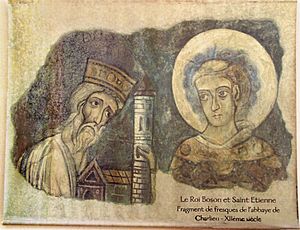
After the Romans left, different groups invaded Provence, including Germanic tribes and Arab pirates. Provence was sometimes ruled by Frankish kings, but often by its own local nobles.
In 879, Boso of Provence became the first ruler of an independent Provence. Over the next centuries, different families of Counts ruled Provence. The region became a prize in conflicts between powerful groups like the rulers of Barcelona, Burgundy, and the Holy Roman Empire.
In the 9th century, Arab pirates, called Saracens, raided Provence. In 973, the people of Provence, led by Count William I, fought and defeated the Saracens.
In 1112, the last descendant of Boson married a Catalan count, Ramon Berenguer III, Count of Barcelona. His family ruled Provence until 1246. During this time, important churches and monasteries were built in a new style called Romanesque. These include Aix Cathedral and the Church of St. Trophime in Arles. Three Cistercian monasteries were also built in quiet areas: Sénanque Abbey, Le Thoronet Abbey, and Silvacane Abbey.
In the 13th century, French kings started to connect with southern France through marriages. In 1246, Charles, Count of Anjou, married the heiress of Provence, Beatrice of Provence. This linked Provence's future to the Kingdom of Naples.
Popes in Avignon
From 1309 to 1377, the head of the Roman Catholic Church, the Pope, lived in Avignon instead of Rome. Seven Popes reigned there. Later, there was a split in the church, and rival Popes lived in both Rome and Avignon until 1423. During this time, the huge Palais des Papes (Papal Palace) was built in Avignon. It is the largest Gothic palace in Europe.
The 14th century was a difficult time. The Black Death (a terrible plague) killed many people in Provence. Wars also forced cities to build strong walls to protect themselves.
Good King René and France
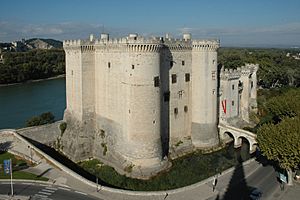
The 15th century brought more wars and changes. King René I of Naples, known as "Good King René," lived in Provence for the last ten years of his life. He supported artists and completed the beautiful castle in Tarascon.
When René died in 1480, Provence became part of France in 1486.
Provence from 1486 to the French Revolution
After joining France, Provence was involved in the French Wars of Religion. Many Jews were forced to leave their homes. Some groups, like the Vaudois, faced persecution for their beliefs. Provence remained mostly Catholic.
Some cities, especially Marseille, often rebelled against the French king. King Louis XIV had forts built in Marseille to control the city. He also built a large naval base in Toulon.
In the 17th century, Provence was mostly rural, with farming and small industries. Cities like Marseille and Toulon grew, with new buildings and boulevards. In the early 18th century, the plague hit Marseille, killing many people. But by the end of the century, industries like perfume-making in Grasse and pottery in Marseille were thriving. Marseille became the third-largest city in France.
French Revolution and Napoleon
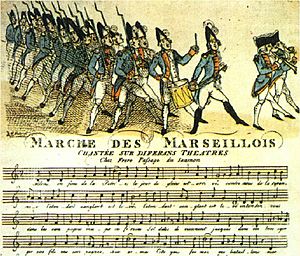
Provence played a part in the French Revolution. Some important figures came from here. The famous French national anthem, La Marseillaise, became popular when volunteers from Marseille sang it as they marched to Paris.
The Revolution was violent in Provence. There were massacres and rebellions. In Toulon, opponents of the Revolution handed the city over to British and Spanish forces. A young artillery commander named Napoleon Bonaparte helped the French army defeat the British and retake Toulon in 1793.
Under Napoleon, Provence saw changes. When Napoleon escaped from Elba in 1815, he avoided the cities of Provence because they were against him.
19th Century: Growth and Change
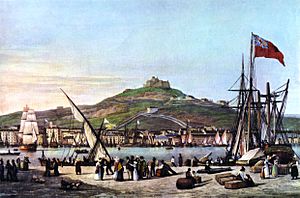
The 19th century was a time of growth for Provence. The ports of Marseille and Toulon connected France with its colonies, especially after the Suez Canal opened in 1869.
In 1860, the Nice region became part of France. The railroad connected Paris to Marseille in 1848, and then to Toulon and Nice. Nice, Antibes, and Hyères became popular winter resorts for European royalty. Marseille grew to a population of 250,000.
After a war in 1871, there were uprisings in Marseille, but they were put down. The second half of the 19th century also saw a revival of the Provençal language and culture, led by the poet Frédéric Mistral, who won the Nobel Prize in 1904.
20th Century: Wars and Tourism
Between the World Wars, Provence was divided between its conservative rural areas and its more radical big cities. Strikes and riots occurred.
During World War II, parts of Provence were occupied by Italian and German soldiers. The French resistance grew stronger. In August 1944, Allied forces landed on the coast of the Var (Operation Dragoon) and liberated Provence.
After the war, Provence rebuilt its cities and infrastructure. In 1962, many French citizens from Algeria settled here. Large North African communities also grew in cities like Marseille and Toulon.
The 1940s saw a cultural rebirth with the Avignon Festival and the reopening of the Cannes Film Festival. New highways and high-speed trains (TGV) made Provence a popular tourist destination for people from all over Europe. Many Europeans bought summer homes here. At the end of the 20th century, Provence worked to balance development with preserving its unique landscape and culture.
Geography of Provence
Borders and Regions
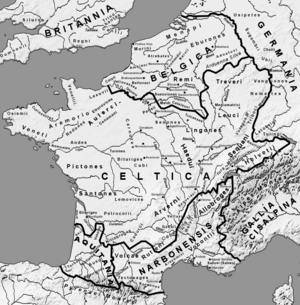
The original Roman province of Provence, called Gallia Narbonensis, stretched from the Alps to the Pyrenees. In the 15th century, Provence was bordered by the Var River to the east, the Rhône River to the west, and the Mediterranean Sea to the south.
The Comtat Venaissin, including Avignon, was ruled by the Pope until the French Revolution. The Nice area was also separate for a long time, joining France in 1860. The modern administrative region of Provence-Alpes-Côte d'Azur was created in 1982. It includes Provence, the Avignon area, and the former county of Nice.
Rivers of Provence

The Rhône River forms the western border of Provence. It's a major river in France, important for trade and travel for centuries. It starts in Switzerland and flows through France, splitting into two arms at Arles to form the Camargue delta before reaching the Mediterranean Sea.
The Durance River starts in the Alps and flows southwest, joining the Rhône near Avignon.
The Verdon River is a tributary of the Durance. It's famous for its stunning Verdon Gorge, a limestone canyon 20 kilometers long and over 300 meters deep. It's a popular spot for climbing and sightseeing.
The Var River rises in the Maritime Alps and flows southeast into the Mediterranean near Nice. Before 1860, it marked France's eastern border along the coast.
The Camargue Delta
The Camargue is Western Europe's largest river delta, covering over 930 square kilometers. It's a flat area with large saltwater lagoons, marshes, and cultivated land.
It's a haven for over 400 bird species, including flamingos. The marshes are also home to many insects, including mosquitoes! The Camargue is also known for its wild bulls and Camargue horses.
Mountains of Provence
The Maritime Alps, on the border with Italy, are the highest mountains in the cultural Provence region, reaching over 3,200 meters. The Mercantour National Park is located here.
Mont Ventoux, at 1,909 meters, is the highest peak entirely within Provence. It's nicknamed the "Giant of Provence" or "The Bald Mountain" because its top is bare limestone. From a distance, it looks snow-capped all year.
The Alpilles are a small mountain range south of Avignon. They are not very high but rise sharply from the Rhône valley plain. Their landscape features dry limestone peaks.
Montagne Sainte-Victoire is famous because the painter Paul Cézanne painted it many times. It's a limestone ridge with its highest point at 1,011 meters.
The Massif des Maures (Mountains of the Moors) is a small mountain chain along the Mediterranean coast. Its name comes from the Moors (Arabs and Berbers from North Africa) who settled here long ago.
The Calanques: Coastal Wonders
The Calanques are a dramatic part of the Provence coast. They are a 20-kilometer series of narrow inlets in the cliffs between Marseille and Cassis. The highest point in this area is Mont Puget, at 565 meters.
Famous calanques include Calanque de Sormiou and Calanque de Morgiou. These inlets were formed by ancient rivers and then deepened by glaciers. The Cosquer cave, with its prehistoric paintings, is found underwater in the Calanque de Morgiou.
The Garrigue is the typical landscape of Provence. It's a type of low scrubland found on limestone soils near the coast. It has a moderate climate with dry summers. You'll find juniper, small oak trees, and aromatic plants like lavender, sage, and rosemary here.
Climate of Provence
Most of Provence has a Mediterranean climate. This means hot, dry summers, mild winters, little snow, and lots of sunshine. However, there are also smaller climate zones, from alpine in the mountains to continental in the northern Vaucluse. The winds are a key part of the climate, especially the mistral. This cold, dry wind blows down the Rhône Valley and can reach over 100 kilometers per hour.
Weather in Different Areas
- Marseille (Bouches-du-Rhône): Has about 59 rainy days a year, but the rain can be very heavy. It rarely snows. Marseille gets a lot of sunshine, over 2,800 hours a year. The mistral wind blows about 100 days a year.
- Toulon (Var): Is slightly warmer, drier, and sunnier than Nice. It gets the most sunshine of any city in mainland France. Strong winds blow often.
- Nice (Alpes-Maritimes): Is protected by the Alps, so its winds are usually gentle. Rain is infrequent but can be very heavy in autumn. Snow is very rare. Nice gets a lot of sunshine, over 2,600 hours a year.
- Alpes-de-Haute-Provence: Has a Mediterranean climate in lower valleys and an alpine climate in high valleys. It can have very cold winters and very hot summers. It's one of the sunniest regions in France, which is why important observatories are located here.
- Vaucluse: Is where three climate zones meet: Mediterranean, alpine, and continental. The Mediterranean climate usually dominates. It gets a lot of sunshine and has strong winds about 110 days a year.
Language and Literature
Famous Thinkers and Writers
- Pytheas (4th century BCE): A geographer and mathematician from Marseille. He explored northern Europe by sea and was the first to describe the midnight sun.
- Petrarch (1304–1374): An Italian poet and scholar who lived in Avignon. He is considered one of the first great figures of Italian literature.
- Nostradamus (1503–1566): A famous fortune-teller known for his prophecies, born in Saint-Rémy-de-Provence and lived in Salon-de-Provence.
Occitan Literature: The Language of Provence
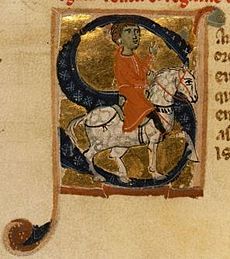
Historically, the language spoken in Provence was Provençal, a dialect of the Occitan language. It's similar to Catalan. There are different local versions, like the one spoken in Nice.
The "golden age" of Provençal literature was in the 11th and 12th centuries, when troubadours wrote poems and love songs in their own language. One famous troubadour was Folquet de Marselha, whose songs were known across Europe.
Provençal was widely spoken until the early 20th century, when the French government encouraged everyone to speak French. Today, Provençal is taught in schools, but only a small number of people, mostly older, speak it regularly.
In the mid-19th century, a movement called the Félibrige tried to bring the language back. It was led by the poet Frédéric Mistral, who won the Nobel Prize for Literature in 1904.
French Authors from Provence
- Alphonse Daudet (1840–1897): Famous for his stories like Lettres de mon moulin (Letters from my Mill), which are about life in Provence.
- Marcel Pagnol (1895–1970): Born in Aubagne, he was a filmmaker and writer known for his childhood stories set in Provence. He was the first filmmaker to join the French Academy.
- Jean Giono (1895–1970): Born in Manosque, he wrote about peasant life in Provence, often inspired by ancient Greek ideas.
Writers Who Loved Provence
Many famous writers from other countries were drawn to Provence's climate and lifestyle in the 19th and 20th centuries.
- Edith Wharton (1862–1937): An American writer who lived in Hyères during winters and springs.
- F. Scott Fitzgerald (1896–1940): An American writer who visited the Riviera and wrote parts of The Great Gatsby there.
- Ivan Bunin (1870–1953): The first Russian writer to win the Nobel Prize, he lived in Grasse and set some of his stories on the French Riviera.
- Somerset Maugham (1874–1965): A British writer who bought a house in Saint-Jean-Cap-Ferrat and lived there for many years.
Music Inspired by Provence
Provence has inspired many musical works:
- Tableaux de Provence (Pictures of Provence): A saxophone concerto by Paule Maurice.
- Mireille: An opera by Charles Gounod, based on Frédéric Mistral's poem.
- 'L'Arlésienne': Incidental music by Georges Bizet for a play by Alphonse Daudet.
- 'Suite Provençale': By Darius Milhaud.
Painters of Provence
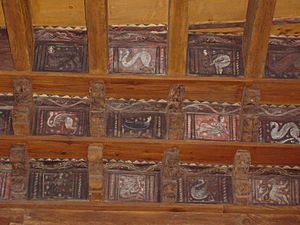

Artists have been painting in Provence for a very long time. Prehistoric paintings were found in the Cosquer Cave. The 14th-century ceiling of Fréjus Cathedral's cloister has amazing paintings of biblical scenes, fantastic animals, and daily life.
Nicolas Froment (1435–1486) was an important painter during the Renaissance. His most famous work is the Burning Bush triptych in Aix Cathedral, which features King René.


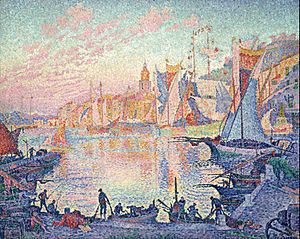
In the 19th and 20th centuries, many famous painters came to Provence because of its beautiful light and climate. The mistral wind helps make the light very clear by removing dust from the air.
- Paul Cézanne (1839–1906): Born in Aix-en-Provence, he lived and worked there most of his life. He often painted local landscapes, especially Montagne Sainte-Victoire.
- Vincent van Gogh (1853–1890): Lived in Provence for only two years, but many of his most famous paintings were created here. He lived in Arles and then Saint-Rémy-de-Provence.
- Auguste Renoir (1841–1919): Settled in Cagnes-sur-Mer and continued to paint there until his death. His house is now a museum.
- Henri Matisse (1869–1954): Settled in Nice in 1917 and lived there for many years, painting the beautiful coastal scenes.
- Pablo Picasso (1881–1973): Spent many summers on the Côte d'Azur and moved there permanently in 1946, living in Vallauris and Mougins.
- Paul Signac (1863–1935): Visited Saint-Tropez in 1892 and bought a villa there. He made many paintings along the coast.
Film in Provence
Provence has a special place in film history. One of the very first movies ever shown, L'Arrivée d'un train en gare de La Ciotat (The Arrival of a Train into La Ciotat Station), was made by Auguste and Louis Lumière at the train station in La Ciotat in 1895. When it was shown in Paris, people were amazed! The Eden Theater in La Ciotat was one of the first places to show movies and is still showing them today.
Other early Lumière films, like the first known filmed comedy, were also made in La Ciotat.
Two classic French films, Jean de Florette and Manon des Sources, beautifully show the countryside of Provence. The British film "A Good Year" also highlights the beauty of Provence and its vineyards.
Cuisine of Provence
-
A traditional Bouillabaisse from Marseille, soup and fish served separately
-
Brandade de Morue is a dish of salt cod and olive oil, served with potatoes or bread in winter
-
A Daube, or Provençal beef stew, cooked in wine
-
A bowl of ratatouille with bread
-
Calissons from Aix
The food in Provence is shaped by its warm, dry climate, its rugged land, and the fresh seafood from the coast. Key ingredients include olives and olive oil, garlic, fish, lamb, goat, and local fruits like peaches and melons.
Here are some famous Provençal dishes:
- Aïoli: A thick garlic and olive oil sauce, often served with fish or potatoes.
- Bouillabaisse: The classic seafood soup from Marseille. It's made with different kinds of fish and shellfish, seasoned with saffron and fennel. The fish and broth are served separately.
- Brandade de Morue: A creamy puree of salt cod, olive oil, and garlic, usually eaten on toast.
- Daube: A beef stew cooked slowly in wine with vegetables and Provençal herbs.
- Pissaladière: A dish from Nice that looks like pizza but has a bread dough base, topped with browned onions, anchovy paste, and small black olives.
- Ratatouille: A traditional stew made with mixed vegetables, originally from Nice.
- Socca: A flat, round cake made from chickpea flour and olive oil, a specialty of Nice. It's baked in a large pan and eaten hot.
- Tapenade: A spread made from pureed olives, capers, and olive oil, usually served on bread.
- Calissons: A traditional sweet from Aix-en-Provence, made from almond paste with melon and orange.
- Tarte Tropézienne: A cream tart invented in Saint-Tropez in the 1950s.
- Thirteen desserts: A Christmas tradition in Provence where thirteen different dishes are served after the main Christmas meal.
- Herbes de Provence: A mix of dried herbs commonly used in Provençal cooking.
Wines of Provence
The wines of Provence have a long history, possibly brought by the Greeks around 600 BC. The Romans later grew grapes here too. For a long time, Provençal wines were not considered very special. However, in recent decades, the quality has greatly improved.
Provence has hot, sunny weather and little rain, which helps the grapes ripen quickly. The mistral wind also plays a role. Most of the wine produced in Provence is rosé. The mourvèdre grape is very important, especially for the red wines of Bandol AOC. AOC Cassis is known for its white wines.
There are three main wine classifications (AOCs) in Provence:
- AOC Côtes de Provence: This is the largest area, producing mostly rosé wines.
- AOC Coteaux d'Aix-en-Provence: Wines here were first planted by Roman soldiers. It also produces mostly rosés.
- AOC Coteaux varois en Provence: A newer classification, also producing mainly rosés.
There are also five smaller, more specific wine areas:
- Bandol AOC: Famous for its red wines made mostly from the mourvèdre grape.
- AOC Cassis: Known for its white wines.
- AOC Bellet: One of the smallest wine regions in France, located near Nice.
- Palette AOC: Known for a special sweet wine used in Christmas desserts.
- Les Baux de Provence: Produces red and rosé wines.
Pastis: The Local Drink
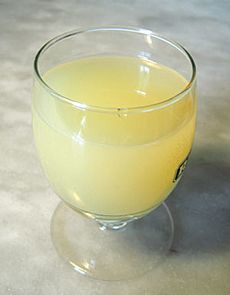
Pastis is the traditional drink of Provence. It's flavored with anise and usually has 40–45% alcohol. People usually drink it mixed with water, which makes it turn cloudy. It's very popular, especially around Marseille.
Pétanque: A Popular Sport

Pétanque, a type of boules, is a very popular sport played in towns and villages all over Provence. It's said to have ancient origins, possibly from the Egyptians, Greeks, and Romans.
A more athletic version, called jeu provençal, was popular in the 19th century. The modern game of Pétanque was created in 1907 in La Ciotat by Jules Hugues, who had rheumatism and couldn't play the old way. He made new rules where players stayed in a small circle with their feet together. This gave the game its name, lei peds tancats, meaning 'feet together' in the Provençal language.
The goal of Pétanque is to throw a metal ball (called a boule) as close as possible to a smaller wooden ball, called the cochonnet. You can also try to knock away your opponent's boules. Players can compete alone or in teams. The first team to get thirteen points wins!
Images for kids
-
The entrance to the Cosquer Cave, decorated with paintings of auks, bison, seals and outlines of hands dating to 27,000 to 19,000 BC, is located 37 metres under the surface of the Calanque de Morgiou in Marseille.
-
The Roman arena at Arles (2nd century AD)
-
Vincent van Gogh, Cafe Terrace at Night, September 1888
-
Darius Milhaud, born in Provence in 1892
See also
 In Spanish: Provenza para niños
In Spanish: Provenza para niños



